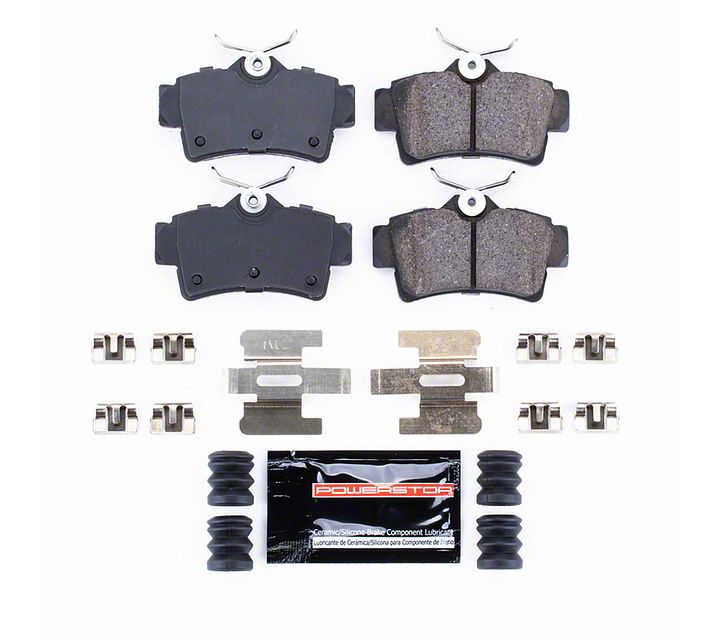
How To Install Power Stop Z23 Evolution Sport Ceramic Brake Pads - Rear Pair on your 1994-2004 Bulli

Shop Parts in this Guide
Front Brake Pad Installation Guide
The installation guide is for reference only. Please refer to the vehicle’s service manual or professional installer for complete instructions.
Ninety percent of the brake pad changes you make during the life of your vehicle will be to the front brakes because they do 60% to 70% of the braking. On most cars, you can look through the openings on the outside of the wheel/rim assembly to see the pads. On some vehicles, you may have to remove the wheel to see the pads. Look at it from above or the side. The pad will be pressed against the shiny metal rotor. The best way to inspect a pad is through visual inspection. If the pad depth is less than 3/16 inch, plan on replacing it soon. If it’s less than 1/8 inch, you should change the brakes immediately.
You can also tell if the brakes should be replaced if you hear noise from the wear sensor on the pad. However, some parts do not have wear sensor clips, i.e. noisemaking clips that are mounted on the brake pad to tell you when the pads need to be changed. If you hear a screeching sound when you apply the brakes, then you are due for a brake change. (If the sound is more like a metal rasp or grinding sound, then you’ve already damaged your rotors and need to fix the brakes immediately.)
STEP ONE:
Have the following parts available before you start the brake change: 1) Power Stop brake pads such as the Evolution ceramic pads, 2) Power Stop cross-drilled or slotted rotors, 3) a bottle of DOT 3 or 4 brake fluid as recommended by your owner’s manual, 4) brake pad grease 5) a c-clamp. You should also have a car jack and jack stands.
STEP TWO:
Block the rear wheels so the car won’t roll once you jack it up. Put the car in park and set the parking brake firmly.
STEP THREE:
Before jacking the car up off the ground, loosen the lug nuts on the wheels just enough to break them free. Work them off just enough until they loosen their resistance and become easy to turn with the tire iron. Raise the car and support with safe jack stands under flat spots on the frame. Usually the frame support area is immediately to the rear of the front wheels.

